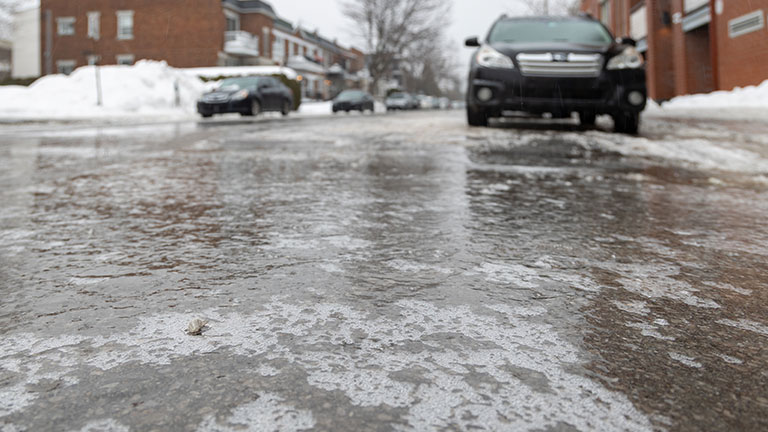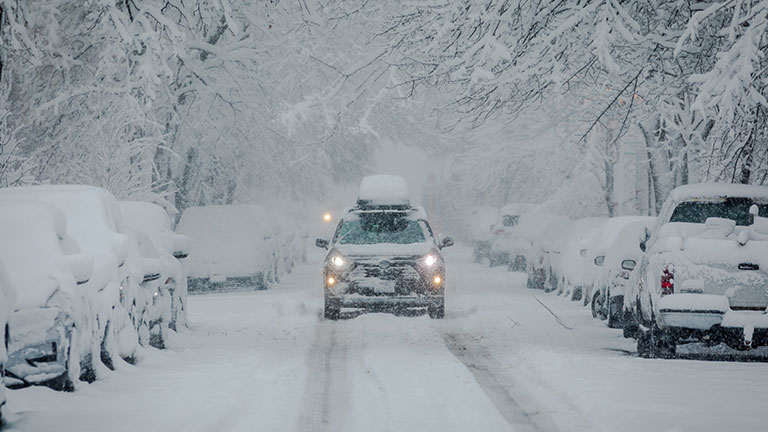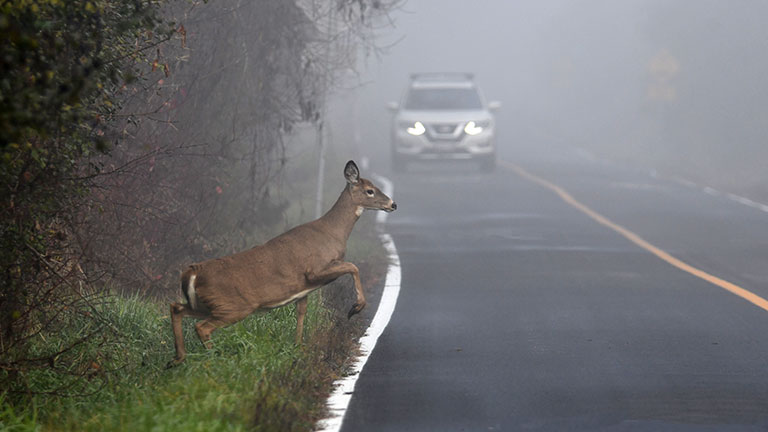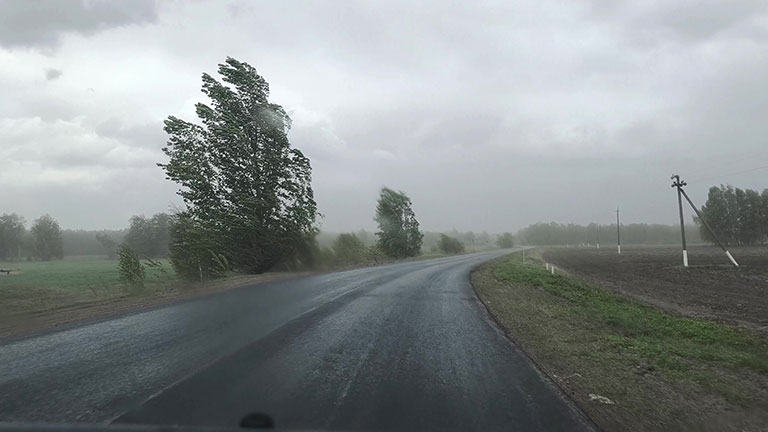Safety Tips for Driving in 4 of the Worst Weather Conditions
From freezing rain and heavy snow to fog and high winds, here’s how to increase your safety when driving in bad weather


The weather can make or break your travels. On a sunny day, just grab your sunglasses and go. But when the weather takes a turn for the worse, you may find yourself gripping the wheel with white knuckles.
That’s no pleasure trip.
On average, nearly 750,000 weather-related crashes occur each year, with more than 3,800 people killed and over 268,000 people injured in those accidents, according to the US Department of Transportation. While all sorts of weather can be hazardous, some conditions are more dangerous than others for motorists.
Here are the top culprits behind weather-related car crashes—and how to stay safe in each one.

No. 1: Freezing rain
Arguably the most dangerous weather in which to drive, freezing rain occurs when rain freezes on contact, coating everything it touches with a thin layer of ice.
Driving in freezing rain is hazardous for an obvious reason: It creates extremely slick conditions. But there’s also an element of surprise. What looks like a wet road may actually be a sheet of ice, misleading drivers into thinking conditions are safer than they really are.
How to stay safe while driving in freezing rain
- Avoid driving on untreated roads whenever possible.
- Slow down and give yourself extra time to stop.
- Increase your following distance to allow more time to react.
- Don’t slam on the brakes, as it can cause your car to skid. If you start to skid, take your foot off the accelerator, and gently steer into the skid. For example, if your car fishtails to the right, steer to the right.
- Keep an eye on your car’s external temperature reading. If it’s within a few degrees of freezing (32° F) and it’s raining or drizzling, assume the road could be icy.
- Watch for black ice, especially on bridges, overpasses, and shaded areas. It’s nearly invisible and extremely slippery.

No. 2: Heavy snowfall
A blanket of fresh snow may look picturesque—but driving through it? Not so much.
Heavy snow creates obvious hazards. If it piles up too high, your car may not even make it through. But even lighter snowfall can reduce traction, limit visibility, and hide patches of black ice, especially if temperatures are hovering around freezing.
How to stay safe while driving in heavy snowfall
- Invest in winter tires. If you live where snow is common, winter tires are well worth it for added traction and safety.
- Test your car’s handling in a safe, open area before hitting the road. Apply gas gradually, as hitting the gas pedal too fast can cause your tires to spin.
- Assume it’s slippery, and slow down. Take extra time for turns and braking. Even treated roads can have icy patches, especially early in the morning or after sunset when melted snow refreezes.
- Clean off all snow and ice from your car before you hit the road. It’s not just about visibility; flying chunks of snow can be dangerous to other drivers. In several states, it’s also the law.
- Give snowplows plenty of space. Stay at least 15 car lengths (roughly 150 feet) behind, and never pass them. They’re improving road conditions, so let them work safely.

No. 3: Fog
Fog acts like a massive blind spot for drivers. When it’s thick and dense, it can nearly wipe out visibility, sometimes reducing your view to just a few feet. That’s incredibly dangerous when you’re behind the wheel of a moving vehicle.
How to stay safe while driving in fog
- Use low-beam headlights. High beams reflect off the fog and actually reduce your visibility.
- Follow road markings to help you stay in your lane and on track.
- Don’t pass other vehicles. Stick to your lane, and maintain a safe following distance.
- Slow down and increase your following distance. Reduced visibility means less time to react to hazards ahead.
- Use your turn signals early. In low visibility, the more notice you give other drivers, the better.
- Keep windows clear. Use your defroster and windshield wipers to prevent fog from building up inside or outside the car.

No. 4: High winds
High winds jolt your car off course, especially when the wind gusts hit 30 miles per hour or more. They can also blow debris or objects into your path with little warning. High-profile vehicles such as large trucks, RVs, and trailers are particularly at risk of tipping, swerving, or being blown off the road entirely.
How to stay safe while driving in high winds
- Keep both hands on the wheel. A firm double-handed grip allows you to stay in control if your car suddenly veers or you need to avoid debris.
- Leave extra space around other vehicles sharing the road. This gives everyone more room in case someone gets pushed out of their lane.
- Avoid towing or hauling. Trailers or rooftop cargo can catch the wind like a sail and make your vehicle unstable.
- Drive with the wind when possible. Crosswinds are more dangerous than tailwinds or headwinds. If you can, choose a route that runs parallel to the wind direction.
- Reduce your speed. Slower speeds give you more time to react if you're hit by a sudden gust or see flying debris.
Of course, it’s best to avoid driving in dangerous weather conditions altogether. But that’s not always possible. While these tips can help you navigate hazardous weather conditions safely, it’s important to pull over if you ever feel unsafe.
Stay ahead of the forecast by regularly checking a trusted weather source for potential travel hazards. And remember to keep your car in top shape with routine maintenance and inspections for your safety and the safety of everyone who shares the roadways.
